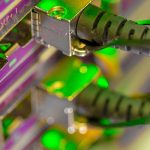As the IOWN Global Forum celebrates its fifth birthday, it’s rolling out plans for 2025. The focus is on updating reference architectures and technologies to boost optical communications and showcasing early use cases that highlight the value of IOWN technologies across various industries.
NTT leads the IOWN project, aimed at addressing the demands of a hyper-connected future. This initiative focuses on building a global communications network that offers ultra-fast, high-capacity internet services using photonics technology. NTT has teamed up with major players like Ericsson, Nokia, Sony, Ciena, Intel, Nvidia, Microsoft, Orange, Telefónica, and Google to tackle the skyrocketing demand for data and the energy surge that comes with it, driven largely by artificial intelligence and large language models. The infrastructure they envision includes terminals capable of delivering swift, high-capacity communications with significant computational resources.
The all-photonic network (APN) infrastructure, being developed by NTT, aims for seamless, low-latency, and energy-efficient communication throughout through optical connections without needing to convert signals to electrical ones.
Founded by NTT, Intel, and Sony, the IOWN Global Forum serves to accelerate the adoption of next-gen communication infrastructure that meets future data and computing needs. It works on new technologies, frameworks, and guidelines in fields like photonics research, distributed computing, and best practices. The forum has grown to include over 150 member organizations from diverse sectors—construction, finance, gaming, and entertainment—as well as web service providers and telecoms. Members include Accenture, Chunghwa Telecom, Ciena, Fujitsu, Google, KDDI, and Red Hat.
With a strong emphasis on energy efficiency, low latency, and high throughput, the Global Forum highlights its focus on Open APN and the convergence of photonics and electronics. These technologies will support advancements in fiber sensing, data spaces, digital twins, security, mobile networking, and data-centric computation.
The forum will also explore established markets like financial services, media production, and AI computing, with particular attention on applications in construction and cyber-physical systems. Potential scenarios include remote surgery, smart manufacturing, real-time disaster response, disease outbreak prediction, and event-driven security.
Katsuhiko Kawazoe, the president of the IOWN Global Forum, pointed out the growing global need for power, data, and speed across digital platforms. He highlighted that while our current communication technologies have served us well, we’re pushing the limits of what they can deliver. In 2025, he envisions continued groundbreaking work in network innovation, aiming for extraordinary improvements in communication capacity, computing scalability, and energy efficiency, ultimately fostering a smarter and safer world.









